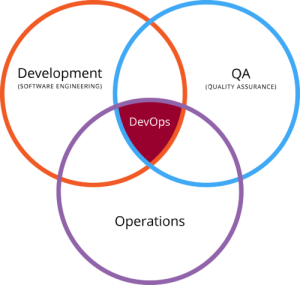Quality at the Speed of Agile and DevOps with Continuous Testing - is “testing at every step” and not “QA” at the end.
Continuous Testing is the process of executing automated tests as part of the software delivery pipeline in order to obtain feedback on the business risks associated with a software release candidate as rapidly as possible and helps to achieve continuous quality & improvement.

Continuous Testing cannot be implemented without test automation. It requires automation of tests at one or more levels, such as Unit Tests, API Tests, Web Services Tests, End-to-End functional UI Tests, but not required to automate the tests at all levels.
Agile and DevOps have made Continuous Testing essential. Yet, software testing is still dominated by legacy tools and outdated processes—which don’t meet the needs of today’s digital transformation initiatives. There are new automation tools in the market for continuous testing such as Katalon Studio, Experitest, Selenium, Protractor, Puppeteer, Tricentis Tosca, we have to use them along with the CI tools such as Jenkins, Travis-CI, etc.
Continuous testing is a lean process of quality at every step. It includes quality user stories, quality environments, quality unit tests, and quality performance tests. Continuous testing is “testing at every step” and not “QA” at the end. It is also shifting testing tasks from Ops at the end, by testing earlier and testing all along the way. CT is adding more tasks as well.
Advantages of Continuous Testing
- Test Early, Test Often, Fix Early
- Achieve Quality at the Speed of Agile and DevOps
- Never Ship Broken Code into the production
- Automated Test Execution and continuous Quality monitoring
- Automated Test Reporting
- Go to Market Faster and to be a Market Leader
At Azuro Technology we follow some of the below approaches based on Application Under Test (AUT)-
- Continuous Testing with Test Automation
- Automate the entire release deployment ruling out human errors that includes running automated unit tests, functional tests, performance, and security tests
- Create a robust framework for automation testing to minimize the errors in Automation
- Continuous Testing with Agile Development
- Use the cloud for cross-browser/environment/ device testing
- Eliminating more bugs through Unit tests or Use TDD approach in the development
- Move from Traditional QA to DevOps QA approach